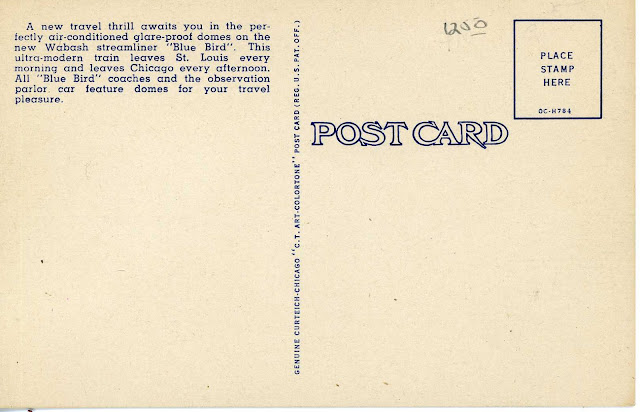The Wabash Railroad never had an extensive passenger fleet, although it did provide high-quality, city-to-city service with trains such as the Banner Blue Limited and Midnight Special. Perhaps most legendary, however, was the Wabash Cannon Ball. In 1938, the Wabash introduced the heavyweight-car Blue Bird passenger train on the Chicago–St. Louis route in 1938 and used Wabash's line between Chicago and St. Louis. The train was painted in a blue-gold color scheme that was previously used on the railroad's Banner Blue.

The first dome train to operate between Chicago and St. Louis, Wabash referred to the new Blue Bird as a "Domeliner". The train consisted of six cars including a combination baggage/lunch counter/lounge car, three dome coaches, a dining car, and a dome parlor-observation car. The Budd Company manufactured all six cars, although the interior of the parlor-observation car was designed by Pullman. Strong demand led the Wabash to add another dome parlor-lounge in 1952. Pullman-Standard delivered the car, which included the eleven seat, private dining Blue Bird Room. The new equipment cost the Wabash $1,500,000. The railroad went on to acquire a group of EMD's new E8 diesel locomotive models as an upgrade to the train's motive power. According to the railroad's official 1950 timetable the trains #24 (northbound) and #21 (southbound) could make the run between the two cities in just over 5 hours carrying an average train speed around 55 mph.
The Blue Bird used the Wabash's line between Chicago and St. Louis. Leaving northbound, train #24 departed St. Louis' Union Station at 8:55 AM and arrived at Chicago's Dearborn Station at 2:05 PM. The equipment set returned as southbound #21 the same day, departing Chicago at 4:45 PM and arriving in St. Louis at 10:10 PM. Intermediate stops included Englewood in Chicago, Forrest, Decatur, Taylorville, Litchfield and Granite City in Illinois, and the Wabash's Delmar Boulevard station in St. Louis. The two other Wabash trains that ran on the same route were the Banner Blue, which operated a reverse schedule as the Blue Bird, and the overnight train Midnight.
In the following railroad-issued postcard set we can read some of the amenities to be enjoyed on the Blue Bird such as automatically opening doors, air conditioning, and anti-glare glass in the dome cars.









No comments:
Post a Comment